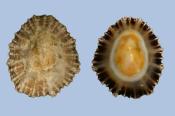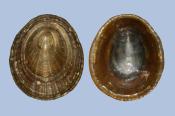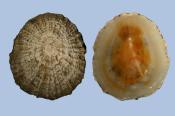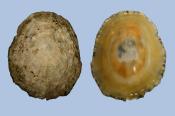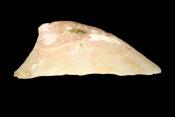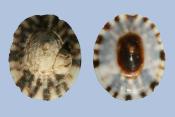The Patellacea or limpets are ubiquitous on most rocks coasts around the UK. Cone shaped shell provides good shape to prevent the animal from being dislodged either by the waves or predators. This is complemented by a strong muscular foot which is used both to move the animal around as well as clamping it down against the rock when it is disturbed.
The animal feeds by scraping up seaweed or microscopic algae using a ribbon of teeth known as a radula. Feeding generally only when the animal is covered by the sea. The trails of left by the feeding activity are often visible on the rock surface. Many species have a strong homing instinct returning to the same point after each foraging excursion and can result in a ring developing on the rock where the animal is repeatedly clamped down.
The sexes are separate usually reproducing in spring when eggs and sperm are released into the water where fertilisation occurs. The larvae drift in the sea for a couple of months before settling and turning into juveniles.
While they are now rarely eaten in the UK, in the past they probably formed an important part of humans diet. Excavations of xx mounds have revealed many thousands of shells which were obviously eaten around this time.
| Patella depressa | Patella pellucida Linnaeus, 1758 | Patella ulyssiponensis | Patella vulgata |
| Tectura virginea | Testudinalia testudinalis (O. F. Müller, 1776) |

